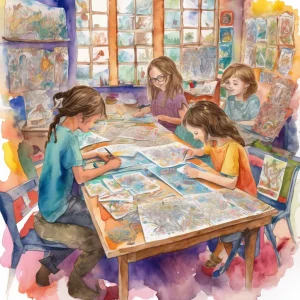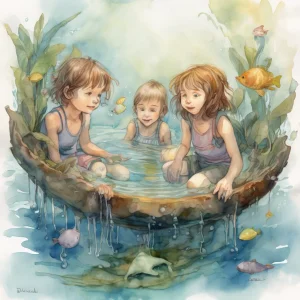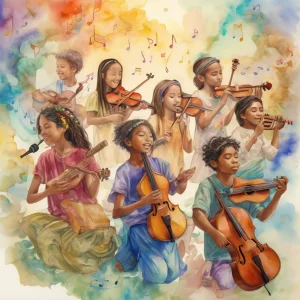Activity
Similar Activities
Around the World Postcard Adventure: Global Tales
Children’s Age: 3–6 years
Activity Duration: 20 minutes
Embark on the "Around the World Postcard Adventure" to explore diverse countries and cultures through creative writing and art! Gather postcards, art supplies, and books about diff…
Activity Duration: 20 minutes
Nature-Inspired Drawing Activity
Children’s Age: 8–9 years
Activity Duration: 10 – 25 minutes
An outdoor activity where children draw natural elements to foster creativity and ecological awareness.
Activity Duration: 10 – 25 minutes
Nature's Objects: Exploring Buoyancy Adventure
Children’s Age: 6–7 years
Activity Duration: 10 minutes
An engaging hands-on activity for children aged 6-7 to explore buoyancy with natural objects.
Activity Duration: 10 minutes
Digital Beats and Hoop Dreams Coding Adventure
Children’s Age: 9–12 years
Activity Duration: 10 – 20 minutes
An engaging coding activity integrating music production, basketball skills, and teamwork for children aged 9-12 years.
Activity Duration: 10 – 20 minutes
Cultural Creatures: Stop-Motion Animation Adventure
Children’s Age: 4–9 years
Activity Duration: 10 – 25 minutes
An interactive activity using technology to create stop-motion animations exploring plants and animals from diverse cultures.
Activity Duration: 10 – 25 minutes
Enchanted Discovery: Nature Scavenger Hunt with a Twist
Children’s Age: 7–8 years
Activity Duration: 10 minutes
An outdoor educational activity for children aged 7-8 involving a nature scavenger hunt with historical items, leading to a nature collage creation.
Activity Duration: 10 minutes
Shadow Hunt and Solar Exploration
Children’s Age: 5–6 years
Activity Duration: 10 – 30 minutes
An activity combining Physics, Space, and Ecological Awareness for children aged 5-6 to explore shadows and solar energy.
Activity Duration: 10 – 30 minutes
Nature Scavenger Hunt: Adventure in the Wild
Children’s Age: 4–9 years
Activity Duration: 10 minutes
An outdoor, nature-based activity promoting ecological awareness and cognitive development in children aged 4-9 years.
Activity Duration: 10 minutes
Cultural Collage Creations: Exploring World Wonders Together
Children’s Age: 7–9 years
Activity Duration: 10 – 25 minutes
Let's embark on a creative journey with "Cultural Collage Creations"! This educational craft project invites children to explore diverse cultures through art. Gather supplies and c…
Activity Duration: 10 – 25 minutes
Space Adventure Obstacle Course: Galactic Learning Journey
Children’s Age: 6–12 years
Activity Duration: 25 minutes
Get ready for an awesome adventure with the Space Adventure Obstacle Course! You'll crawl through cardboard box spaceships, jump over paper tube asteroids, and follow colorful tape…
Activity Duration: 25 minutes
Cosmic Harmonies: Music from Space Journey
Children’s Age: 10–12 years
Activity Duration: 40 minutes
"Music from Space" is an engaging activity tailored for children aged 10-12, combining fun and education to promote academic growth, empathy, and ecological awareness. Participants…
Activity Duration: 40 minutes
Eco-Tech Dance Party: Nature's Rhythms and Tech
Children’s Age: 6–10 years
Activity Duration: 25 minutes
The "Eco-Tech Dance Party" activity merges technology, dance, and eco-awareness for an engaging experience. Ideal for children, this activity promotes moral growth, language develo…
Activity Duration: 25 minutes



























